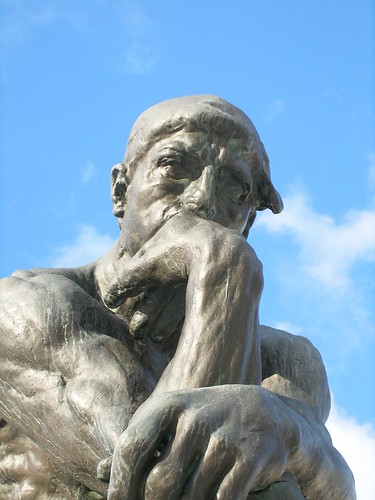 I've been meaning to read Bill Dettmer's The Logical Thinking Processes
I've been meaning to read Bill Dettmer's The Logical Thinking Processes
The book is a textbook, meant to be studied and used as such. I anticipate referring back to it over and over again as I continue my adventure on using Theory of Constraints in consulting and as it continues to infiltrate my thinking in other areas. Most of the text is full of the hows and whys of the Thinking Processes, which is very instructive. But the last chapter focuses on change management: or more specifically on how to think about making change happen in human systems. Importantly, Dettmer wants the reader to remember that all the logic in the world won't necessarily make a change happen if the human elements aren't taken into account. Beyond that, he recommends you dive into the other literature on the topic. Interestingly, he doesn't repeat the common TOC model of "resistance to change" that many people think has outlived its purpose.
What are the thinking tools? Here is a brief description of each.
Intermediate Objectives Map. This describes an overall goal and the necessary elements required on the way to getting there. It seems best used as a starting point for the rest of the tools to help set scope and direction for the rest of the thinking.
Current Reality Tree (CRT). This is a tree focused on rooting out the cause of problems observed in the system. In other words: here are the things we don't like about the system and here is what we see as creating the undesirable effects (UDE's). It's focused on helping build a logical explanation behind what is going on underneath the covers - as opposed to the assumptions that people often make about the reality of the situation.
Evaporating Cloud. Along with the CRT, the Evaporating Cloud is one of the most commonly-used tools within this suite. The core behind the Evaporating Cloud is to evaporate conflicts: conflicts that arise when the situation forces you (individually or as a business) to choose between two conflicting options. It can even be used to help resolve conflicts between people. And my colleague just reminded me that nearly every Root Cause from the CRT most likely has a conflict behind it.
Future Reality Tree (FRT). Once you've developed your understanding of the current reality and the underlying conflicts, the FRT helps chart the path from today to a new situation - usually where the UDE's turn into Desirable Effects (De's). The FRT is also where the powerful idea of Negative Branches come up. If I implement my good idea, what negative unintended consequences might arise? In designing a FRT, Dettmer also encourages the creation of positive feedback loops to create a self-reinforcing system. This is a key tie-in to the final chapter, where he talks about change and motivating human behavior.
Prerequisite Tree (PrT). Given the FRT and potentially several specific intervention, the PrT is designed to highlight the specific actions that need to be taken to make the intervention happen. The PrT is also used to highlight potential obstacles on the way to an implementation and what needs to be done to overcome those obstacles. (Dettmer has combined the PrT with the Transition Tree, and no longer recommends that they be separate entities.)
One other fun element of the book is that it is loaded with pithy quotes related to the topic at hand. Everything from the ever-popular Anonymous to Demming to ancient writers. I was tempted to transcribe all the quotes, but this post is long enough.
[Photo: "Think" by planetschwa - Rodin's The Thinker in front of the Cleveland Museum of Art]